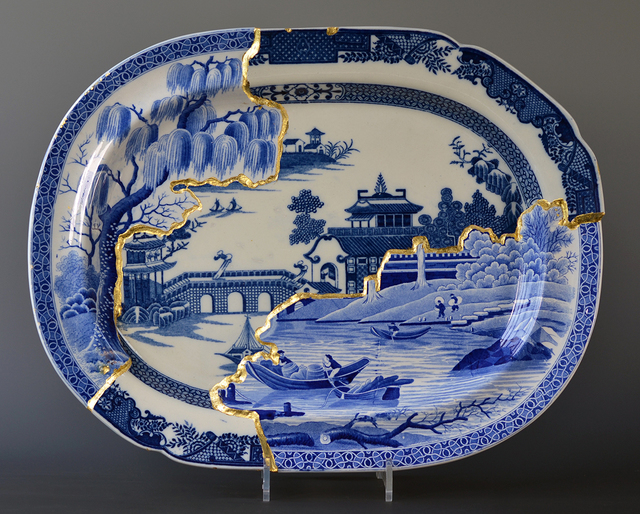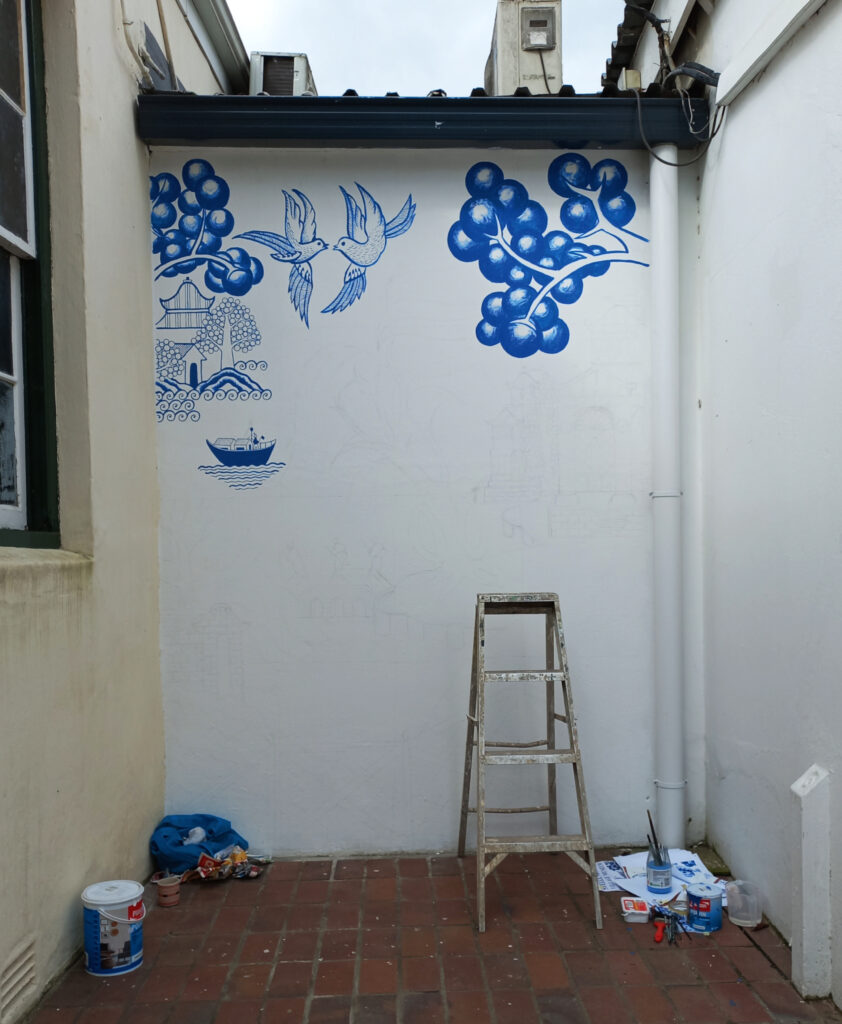
- Local Trippers
-
by John Pot
There are moments in our lives that stand out from those innumerable in the amorphous soup of memory—beads on the same string, formed from the same joys, sorrows, taken and missed opportunities. Hindsight is a powerful pattern-seeking computer that you can waste your life behind if you’re not careful…
The museum I work at has the longstanding problem of no one knowing about its existence. I myself had no idea until I started working here. An older colleague told me that this has been an issue since the 1980s! We’ve tried all sorts of marketing tactics to no avail, so maybe the Muses just don’t like us all that much… Or maybe it’s a challenge?
Whatever the case, our latest attempt at making the museum a bit more visible is by sprucing up the front entrance. People walk by the sign that clearly says “museum” every day but somehow still don’t know what’s inside. My suggestion was to paint a mural—something bright to catch the eye. We’re permanently on a tight budget, though, so really we could only afford one colour, so we needed to come up with something appropriate. Luckily we have a vast collection of blue and white porcelain, and luckily some 18th century English guy created a Chinese-inspired design that went on to be reproduced on so much European porcelain that if you have a blue and white piece it most likely bears the quintessential pagoda, bridge, doves, and boats, and of course the design’s namesake tree. And so it was decided that the Willow Pattern would be reproduced one more time, this time on a wall.

The first step was arranging the design on my computer, printing it out, and gathering supplies—easy-peasy. Penciling it in wasn’t so difficult either. A helpful grid made short work of getting all the elements in the right place at the right size. The scary part, as with any blank canvas, was the first brushstroke. This was my first time painting on a wall, in the busy part of town, no less. As exciting as it was, the pressure was on to not mess it up in front of an audience. Well, I did mess it up.
Life is full of blank canvases for us the artists to make our marks on: first dates, job interviews, the first night of a tolerance break. Being the imperfect creatures that we are, fumbling is inevitable, no matter how much careful preparation and confidence goes into those all-important first moments. What then?
For my mural’s first mark I decided to begin with the two love birds (always start painting murals from the top, lest you splash paint on your hard work down below). Up the ladder I go, hoping I don’t fall backwards and break my neck, paintbrush in hand. Short story short, I hated the first stroke—the line was too thick, the damn bird’s beak was supposed to go there! Well, under circumstances I had no choice but to carry on. The first bird’s head turned out a bit smaller than I intended, but it didn’t look that bad so I thought it’d be fine. But hey, even errors need friends, so I messed up again, this time with the second bird’s wings. It felt horrible, even though my colleagues insisted they couldn’t spot the problem. But I knew, and the bird knew. Our mistakes sit with us and stand out to us, but that doesn’t mean they’re as glaring as we think; even if they were, most people wouldn’t even care.

“Trust the process” was my mantra. I did one of the trees next, the one hanging over from the right. Naturally I hated the branches the moment I painted the first curve. The lines seemed too thick and looked out of place next to the more delicate birds, but once I painted in the stylized tufts of foliage, it turned out pretty alright. This is how it went—every time I started a new element something about it seemed horribly wrong, so I repeated: “Trust the process! Trust the process!” After all, once you start fixating on a problem instead of leaving it and moving on, chances are you’re going to overwork it and actually mess it up. If you keep trying to paint a perfect circle, the circle’s just going to get bigger and bigger until it’s so out of proportion that it becomes an eyesore.
Now that the mural is finished I can just stand back and look. There were a couple of blue splotches where there weren’t meant to be and it took quite a bit of doing to cover them up. If I really wanted to I could go back in and try to fix all my little mistakes, but I can tell you now that it’s going to be an arduous process that’s sure to cause more problems than it’s worth and I’ll end up with a Frankenstein’s monster of a mural.
I can stand back and look—at all the little mistakes, all the awkward lines and misshapen circles; I can look and look until I hate the whole thing. Hindsight will kill it for me and take away from how much I enjoyed creating it.
I can stand back and look—at the painting as a whole; all its little mistakes as proof that I persevered and by my own hand. I’m quite pleased with how it turned out in the end; like us, it’s the sum of its parts, mistakes and all.

